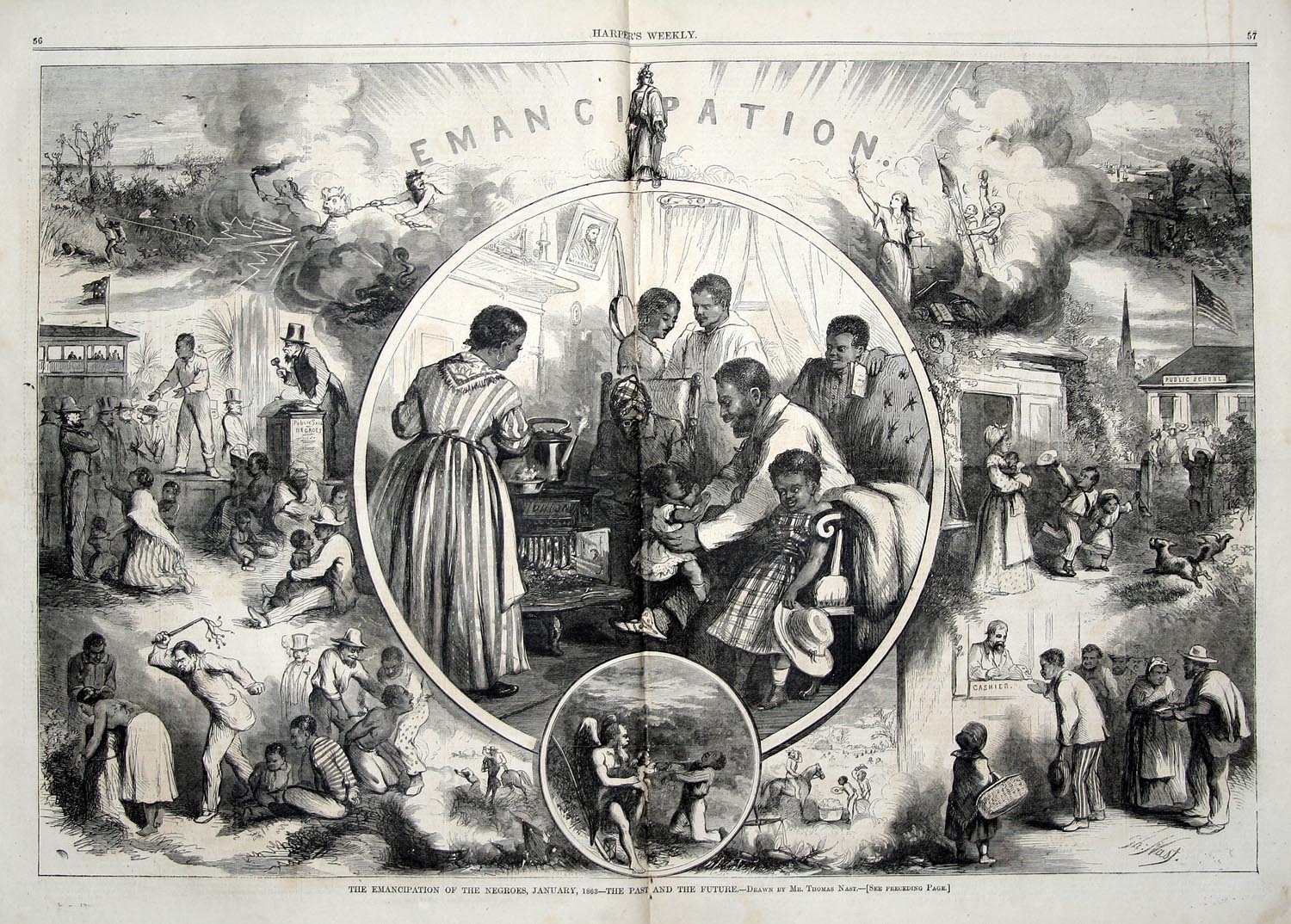http://scriptorium.lib.duke.edu/slavery/freedom.html

This is a Muster Roll of Captain Squire N. Osburn's Company A of the 46th Regiment of the U.S. Infantry Colored. It shows the soldiers who are former Arkansas slaves.Click here for a larger image. You can also find many more primary documents on slaves and the army on the link.
http://www.nps.gov/cwdw/historyculture/the-united-states-colored-troops-and-the-defenses-of-washington.htm
On July 17, 1862 Lincoln authorized the use of African Americans in federal service by issuing the Second Confiscation and Militia Act.

Later, on January 1, 1863 the Emancipation Proclamation was issued allowing African Americans to serve in the army. It freed all the slaves in the states that had seceded from the Union.This caused about 186,000 Africans to sign up for the army and 30,000 joined the navy. The Proclamation strengthened the North politically and militarily. Click here for all five pages.

The Massachusetts 54th Regiment was commanded by Colonel Robert Gould Shaw. When the regiment found out that they were getting unequal pay they protested by not accepting any pay. In 1864 the War Department made it so everyone got equal pay. The 54th Regiment was famous for being one of the bravest troops on their attack on Fort Wagner. They had great losses and had to retreat.

http://www.pbs.org/wgbh/aia/part4/4p2967.html
At first Lincoln insisted that the war wasn't for freeing the slaves, but to preserve the Union because of this Africans weren't allowed to sign up. Prior to the war blacks worked on navel ships for years and were accepted into the navy. On August 6, 1861 fugitive slaves were declared as "contraband of war" if they had been used to help the Confederacy in anyway they were freed. The South was using the slaves to help with the war when the North was refusing any help. After the North had a big victory Lincoln issued the Emancipation Proclamation. This is an illustration by Thomas Nast showing the Emancipation Proclamation.

No comments:
Post a Comment